2017 Ambassadors
ACEAP 2017 Ambassadors
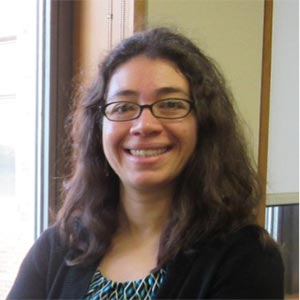
Angela Osterman Meyer, Ph.D.
Angela Osterman Meyer is a high school science instructor at Culver Academies in Culver, Indiana who strives to build an engaged community of learners doing student-led activities that utilize technology and online resources, and increase aptitude and appreciation for learning and practicing science. Angela holds a B.S. in Physics from Georgia Tech and a M.S. in Physics from Georgia State University. She earned a Ph.D. in Astronomy from Georgia State through research on the multi-frequency variability of blazars. Angela then joined the physics faculty at Florida Gulf Coast University where she developed and assessed observation-based projects through collaboration with science and education colleagues, with support awarded from the NASA Florida Space Grant Consortium. She transitioned to a career teaching high school to focus on connecting young people to astronomy through authentic activities and projects that draw from real observations and current unanswered questions about our universe. Angela’s numerous outreach and education activities include speaking to the public about physics and astronomy, leading observatory open houses and stargazing events, developing hands-on activities for elementary and middle school students, and developing and leading workshops for K-college teachers. Angela is very excited and proud to be a part of the 2017 ACEAP cohort and is eager to share her experiences both inside and outside of her school and local communities.
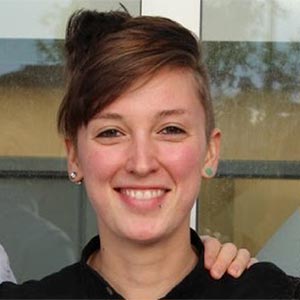
Ariel Hicks
Ariel Hicks is an amateur astronomer and Research Assistant at The Johns Hopkins Center to Eliminate Cardiovascular Health Disparities. At Johns Hopkins, she works on a project that aims to eliminate health disparities among underserved minorities in Maryland, Pennsylvania, and Virginia. Ariel’s educational background is in environmental sustainability and human ecology. She loves to spend time teaching the kids of Charles Carroll Barrister Elementary School how to plant and grow healthy foods through the Pigtown Food For Thought community garden. Additionally, she maintains the title of Master Gardener through the University of Maryland Extension Master Gardener program. In 2015 she hiked over 900 miles of the Appalachian trail from West Virginia to Maine. When Ariel is not at work or at the community garden, she spends most of her free time co-leading the Baltimore #popscope: Public Astronomy Nights chapter.
#Popscope is an urban movement that aims to connect diverse communities to the night sky and to each other by hosting free, “pop-up” astronomy nights in public spaces. By putting a telescope in every neighborhood and empowering community members to lead pop-up astronomy nights of their own, #popscope is able to build community and promote science among underserved populations. This approach was critical during the Baltimore uprising of 2015. For thousands of years, the night sky has inspired and brought people together. With chapters in Ottawa, Montreal, Boston, New York, Philadelphia, Baltimore and Jacksonville, we hope to bring people together for many more years. #Popscope is currently collaborating with the Enoch Pratt Free Library of Baltimore by hosting free weekly public astronomy nights. For more information on #popscope, visit www.popscope.org.
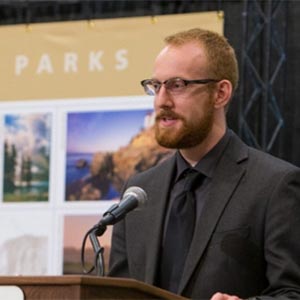
Matthew Dieterich
Matt Dieterich is an award winning astrophotographer who is passionate about combining education and photography. His pursuit of astrophotography aims to promote awareness for light pollution and night sky preservation. Matt received his B.S. in Environmental Science from Robert Morris University and M.S. in Geology from the University of Pittsburgh. After receiving his Master’s Degree, Matt worked as an Astronomy Ranger intern at Mount Rainier National Park in 2015. While at Mount Rainier, he educated park visitors about astronomy, light pollution, and astrophotography techniques. During the summer internship, Matt conducted 50 star parties to over 10,000 park visitors. His favorite part was seeing the expression on visitor’s faces when looking up at the night sky. Matt’s experience at Mount Rainier reaffirmed his passion for field-based science outreach and education.
Matt’s began his involvement in amateur astronomy while in high school during 2007. Since then, he has traveled to dark sky locations to photograph the night sky free from city lights. His first experience seeing the Milky Way was from Colorado in 2008, which snowballed into a lifelong pursuit to share the night sky with others.
In 2016, Matt’s “Star Trails over Mt. Rainier” photo was selected by the U.S. Postal Service as a Forever Stamp celebrating the National Park Service Centennial. Matt’s photography has been published by Astronomy Magazine, Sky & Telescope, and NASA’s Astronomy Picture of the Day. The goal of Matt’s work is to inspire others to preserve and protect the night sky for future generations to enjoy. Matt shares his passion for astronomy through outreach events, invited presentations, and social media.
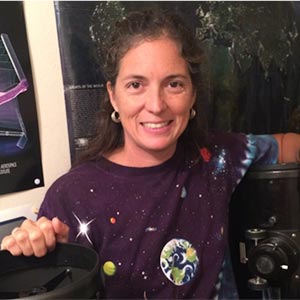
Amy Jackson, M.S.T.
Amy has many wheels spinning, each related to one common theme: inspire people to love astronomy! Amy is the founder and director of Starry Sky Austin where she has been teaching kids and adults night time observational astronomy in parks throughout Austin since 2008. She is also an astronomy educator for Travis County Reimers Observatory, the UT Informal Classes program, the Austin Independent School District and a published author of a children’s book about the night sky. She began her passion with space by falling in love with NASA after visiting the Johnson Space Center as a child. Her desire to become an astronaut lead her to study physics at the University of Houston where she worked with the Space Physics Group. She learned a lot about astronomy and helped to restore UH’s roof-top observatory. Her love of kids and space came together when she attended Rice University’s Master of Science Teaching program and became a certified science teacher while working at the Houston Museum of Natural Science Astronomy department. Her journey working in the classroom led her to realize she wanted to focus on teaching what she loved most: astronomy. Spreading her love of astronomy has taken her to girl scout campouts, vacation resorts, public gatherings, the streets of downtown Austin during SXSW, school settings, museums, science centers, a coffee plantation community in Guatemala, and now Chile. She has volunteered in schools through the Astronomy Society of the Pacific’s Project Astro, helped to put on the International Dark Sky Association Texas Night Sky Festival, and helped start the first AstroCamp with the Texas Museum of Science and Technology. Inspired by star stories the kids made up during AstroCamp, she decided to make up her own to tell during programs, and it is now a published children’s book called “Cassandra and the Night Sky”. Promoting the book has opened doors to speaking to astronomy clubs about outreach programs and to teaching more kids and adults of all ages. She can’t wait to share what she’ll learn in Chile with the observatory visitors and students.
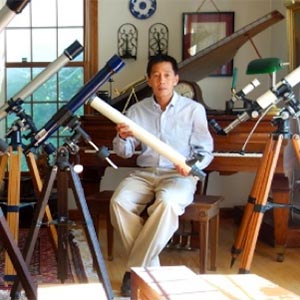
Ed Ting
Ed Ting is a well-known amateur astronomer. His writings on astronomy and astrophotography have appeared in Amateur Astronomy, Night Sky, Skywatch 20xx, Popular Mechanics, and Sky & Telescope magazines. He has been on New Hampshire Public Radio, on the Manchester NH based TV program Star Hop, and is a past president of the New Hampshire Astronomical Society. He is a frequent speaker at schools throughout New England, and at the MSDC planetarium in Concord, NH. His telescope review web site is the largest and most popular of its kind in the world. He teaches a course on astrophotography at the New Hampshire Institute of Art, and his astrophotos have been displayed in galleries throughout New England. Ed holds an MFA from the New Hampshire Institute of Art.
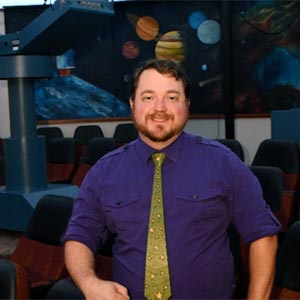
Derek J. Demeter
Derek Demeter began working at the Emil Buehler Planetarium at Seminole State College of Florida in 2003. By 2007, Mr. Demeter was offered the position of Planetarium Director, and immediately began the process of writing and producing new shows. Over much of the last decade, his passion for teaching people about the wonders of the universe has earned him accolades and recognition from the planetarium industry, his peers, and the community. Derek currently serves as the president of the Southeastern Planetarium Association. Derek enjoys promoting science beyond the planetarium with his work as an astrophotographer, which earned him pictures seen in NASA’s Astronomy Picture of the Day website. Derek also enjoys giving talks to venues such as astronomy festivals, local libraries, serving as president of the Central Florida Astronomical Society, and simply setting up a telescope at local venues to give the public a truly “out-of-this world” experience.
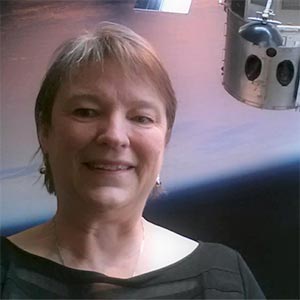
Alice Few
Alice Few is an Institutional Analyst for the University of Washington, but her real passions include astronomy and working with youth. She is an adjunct faculty at Tacoma Community College, a volunteer for Tacoma Astronomical Society (TAS), and a volunteer program facilitator for Girl Scouts of Western Washington. Alice takes advantage of her diverse experiences; mixing and matching various techniques when creating learning opportunities.
Alice helped develop and execute the “Massive Sky” program, gathering 40 Girl Scouts from around the United States for a 2-week intensive program in astronomy, aviation, and space exploration. As part of the Night Sky Network, Alice toted her astronomy equipment to Yosemite National Park to train Park Rangers from across the US in astronomy outreach techniques. Alice co-directs the annual TAS Student program, annual star party, and helps TAS host free public planetarium programs and evening star parties twice a month.
As an educator, Alice believes service-learning is a powerful educational tool so she created the “Astronomy in the Community” program and assigns it as an outreach project for her students each quarter. With a B.A. in Sociology and an M.S. in Astronomy, she reaches across liberal arts and the sciences to incorporate the perspectives and backgrounds of those in her class, audience, workshop, or those just clustered in the dark around her telescope.
Alice is delighted to be part of ACEAP and eager to share the experience with her extended community.
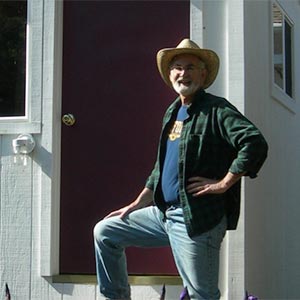
Rich Lohman
Rich Lohman is an educator and amateur astronomer in addition to his major roles as husband and grandpa. During his professional career he spent 32 years teaching math & science in a San Francisco Bay Area high school. The latter portion of that career became a focus on teaching physics through the “lens” of astronomy. When Rich got a view of Jupiter and its moons through a small telescope, he was hooked. That led him into a long-term connection with Hands-On Universe (HOU), an NSF-funded program which uses astronomical images and image-processing software to teach concepts in astronomy, physics and mathematics. Within HOU he has trained several hundred teachers both nationally and internationally. In recent years he has made 4 trips to Chile training middle and high-school teachers. Ironically, Chile was where he spent 2 years in the Peace Corps in the late 60’s. Ten years ago Rich’s passion for viewing the sky led to his construction of a backyard observatory he calls “Over-The-Hill Observatory”. OTH Observatory is now the center of his adult education course called “What’s Up in the Night Sky?” It is also a place where he invites family (including his grandchildren), friends and local teachers with their students to view the wonders of the heavens. Since his day in the Peace Corps Rich has held a very special place in his heart for the people and culture of Chile. He looks forward to returning there.
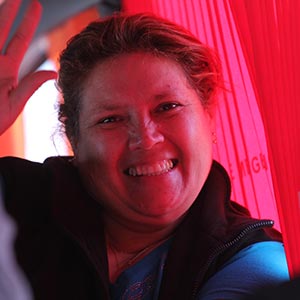
Maria Rebeca Lopez
María Rebeca holds a Bachelors degree in Education with a major in Plastic Arts from the Universidad de Concepción and a Masters degree in Technology Education and Process Evaluation. She has been involved in the field of education for 21 years and is currently a teacher at Carlos Condell de la Haza School, reporting to the Gabriel Gonzalez Videla Municipal Corporation of La Serena, where she participates in a number of novel educational activities and school-related astronomy projects. These activities are sponsored by AURA Observatory in Chile, MIM, Explora -CONICYT and seek to develop skills associated with scientific research, problem resolution and to build a conscience about the right of future generations to a sustainable Earth and clear dark skies.
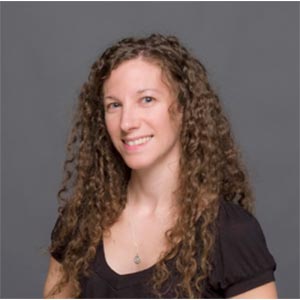
Alison Klesman
Media Liaison
Alison Klesman is an associate editor at Astronomy magazine in Waukesha, Wisconsin. Throughout her education, she completed several years of research in the fields of planetary science and extragalactic astronomy, working on research topics that ranged from the characterization of comets, asteroids, and the atmosphere of Pluto to surveying active galactic nuclei in massive galaxy clusters via archival X-ray, optical, and infrared observations. As a student at MIT, she spent several semesters observing with the 24” telescope at the George R. Wallace, Jr. Astrophysical Observatory. While earning her doctorate at the University of Florida, she taught astronomy lab classes and was heavily involved in astronomy education outreach through the Astronomy Department, including giving planetarium tours with a portable STARLAB and taking part in the creation and management of the Student Training in Astronomy Research Skills (STARS) program. Between 2012 and 2016, she spent nights as an observing guide for small groups at Spencer’s Observatory, a privately owned observatory in Tucson, Arizona. Her professional writing career includes four years of exclusive web content development creating blogs, infographics, how-to guides, and website landing page content, as well as her current work on Astronomy magazine’s website and print publications. Her trip to Chile will provide the content for her first feature piece in the magazine. When there’s time to spare, Alison enjoys running, traveling, history, and reading.
